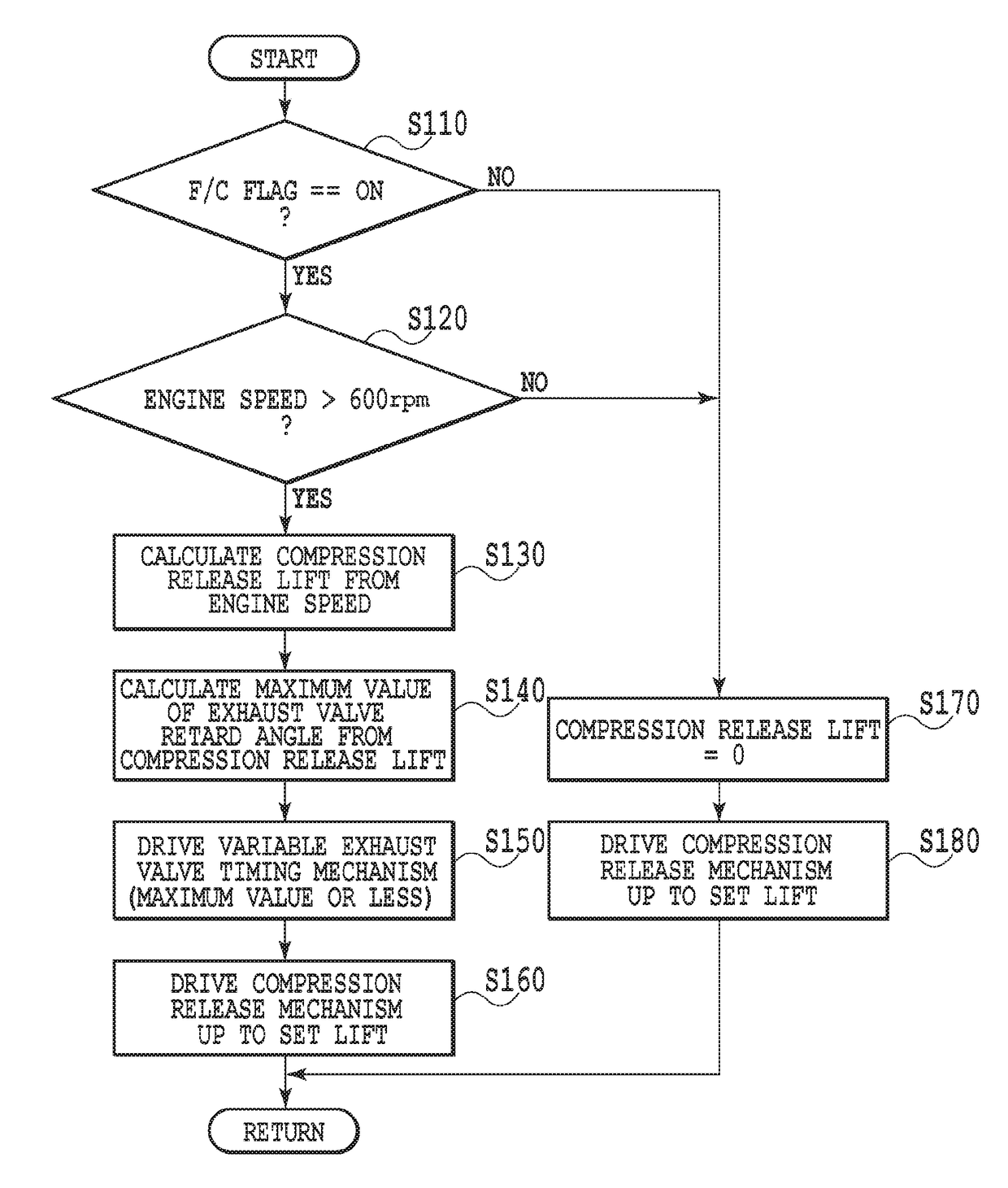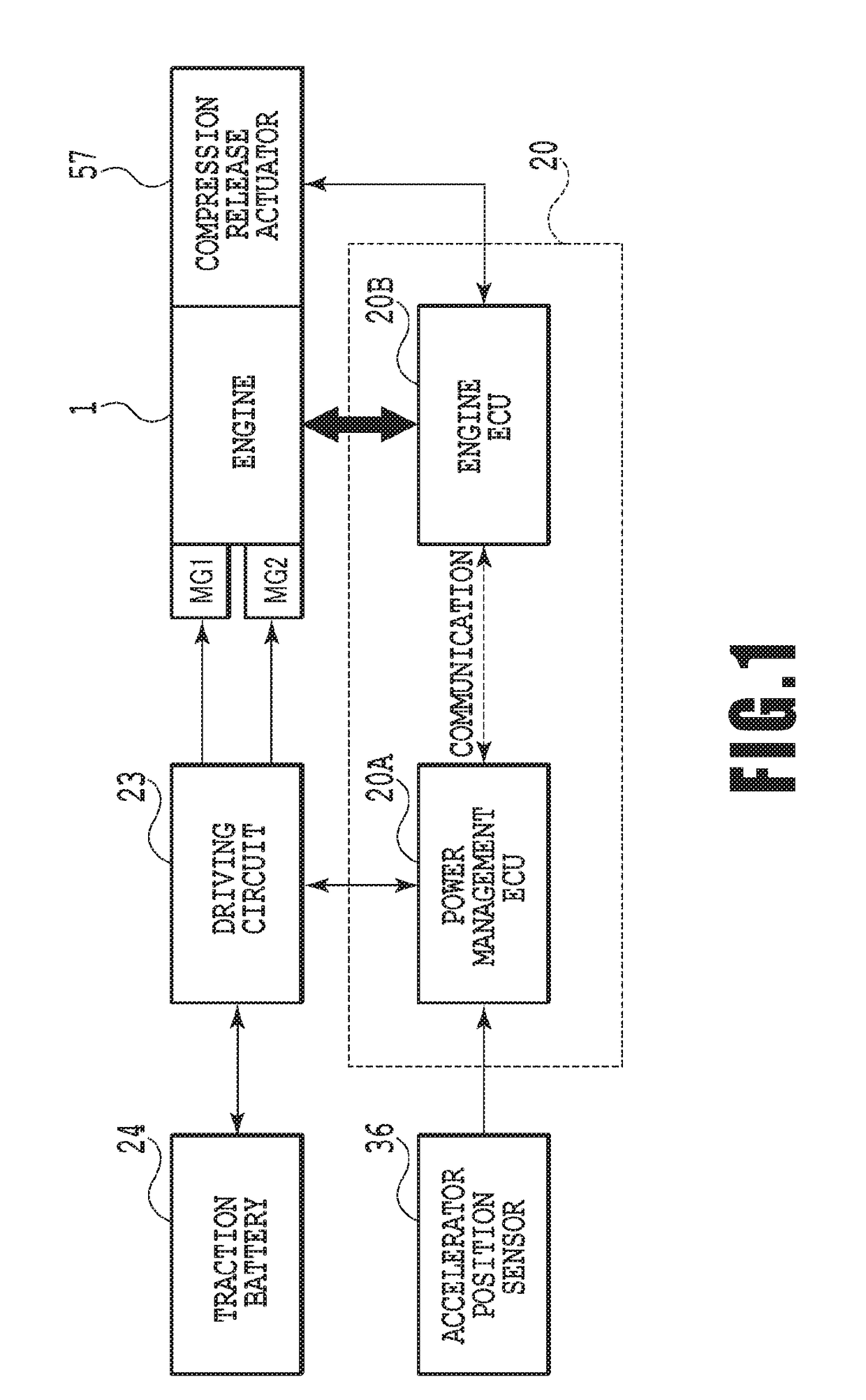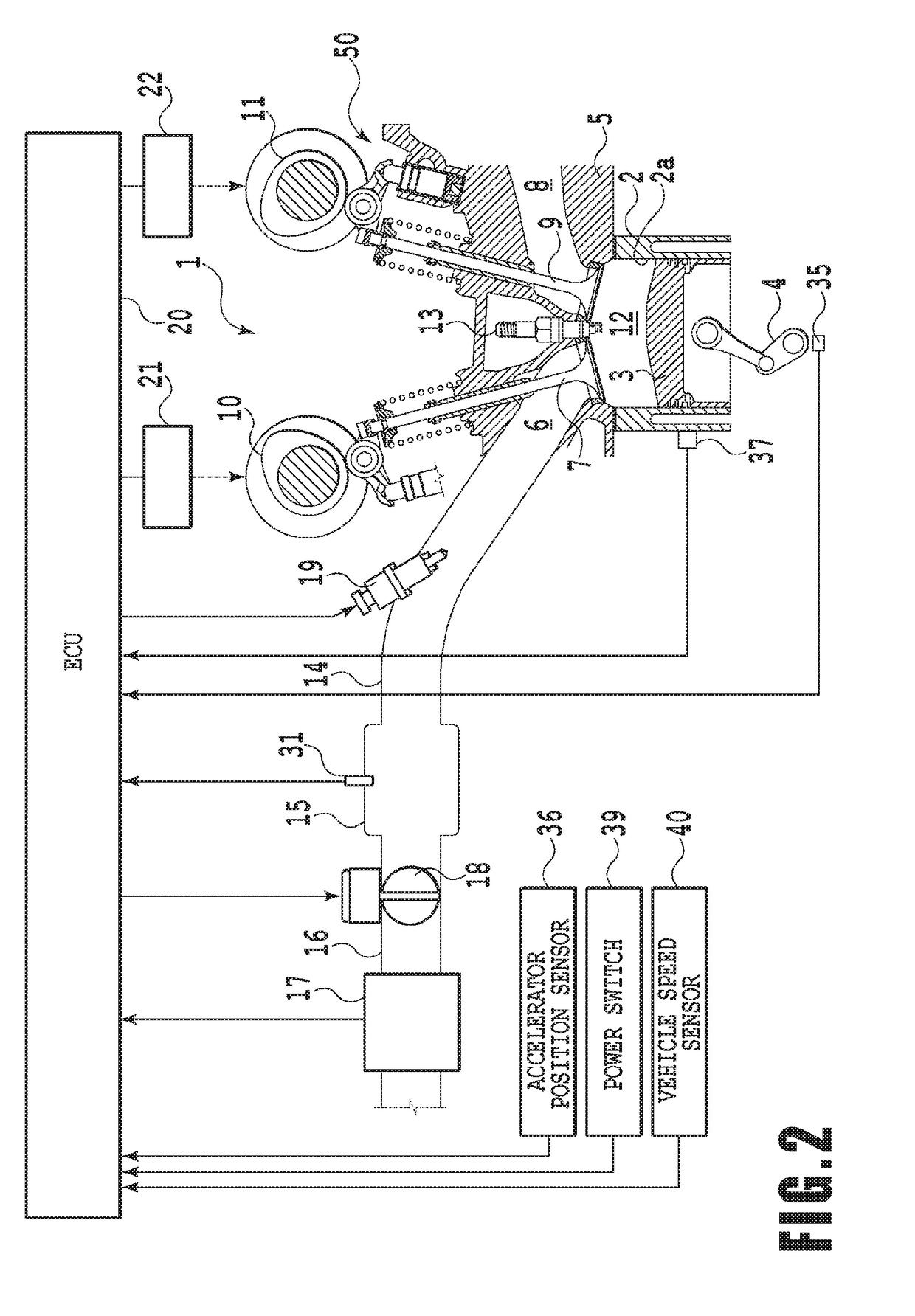Apparatus for controlling internal combustion engine
a technology of internal combustion engine and actuator, which is applied in the direction of electric control, machines/engines, output power, etc., can solve the problems of ineffective significant pumping losses, and achieve the effect of reducing flow losses, suppressing energy consumption required by the operation of compression release mechanisms, and facilitating utilization of inertial energy
- Summary
- Abstract
- Description
- Claims
- Application Information
AI Technical Summary
Benefits of technology
Problems solved by technology
Method used
Image
Examples
first embodiment
[0082]Note that in the first embodiment, as illustrated in the engine speed—lift amount map of FIG. 8, in the region of less than a predetermined upper limit of the speed of the engine 1, the compression release lift amount Ld is predetermined to change proportionally and continuously with respect to changes in engine speed. For this reason, shocks caused by changes in the compression release lift amount Ld may be suppressed. However, the relationship between the engine speed and the compression release lift amount Ld may also be predetermined so that the compression release lift amount Ld changes in a stepwise or discrete manner in multiple stages (that is, two or more stages) as the engine speed increases gradually.
[0083]Next, a second exemplary embodiment of the present invention will be described.
[0084]Engines having an additional mechanism to vary the opening / closing phases of not only intake valves but also the exhaust valves are widely used. The purposes of such a mechanism a...
second embodiment
[0086]Such retardation of the closing timing of the exhaust valve may be maintained even when transitioning from normal driving, during which fuel is supplied, to coasting with the fuel cut off. Also, even when coasting with the fuel cut off, it is still conceivable to retard the closing timing of the exhaust valve 9 in order to decrease pumping losses, increase inertial travel distance, and / or increase the amount of regenerated electric power to decrease fuel consumption. However, in the case of a compression release mechanism that provides an additional opening degree to the exhaust valve 9, there is a risk that providing the compression release lift amount Ld will cause the lift amount in the maximally retarded case to take the dashed line h2, and the exhaust valve 9 to interfere with the piston 3. For this reason, in order to avoid interference between the exhaust valve 9 and the piston 3, a sufficiently large compression release lift amount Ld cannot be set. On the other hand, ...
third embodiment
[0097]Next, the present invention will be described.
[0098]In the foregoing first embodiment, when coasting with the fuel cut off, the compression release lift amount Ld of the exhaust valve 9 is made larger as the speed of the engine 1 rises. For this reason, in the region of high speed, pumping losses caused by flow losses may be suppressed, and engine friction may be suppressed. However, there is a problem in that, even though the engine speed is in the high region, there is little sense of deceleration caused by the engine deceleration torque, which may feel unnatural to the driver. The third embodiment is directed at this problem, and features controlling the deceleration torque produced by the generator according to the difference in power loss between when the compression release mechanism 50 is operating and not operating.
[0099]In the third embodiment, the deceleration torque of the second motor generator MG2 is made to increase to compensate for the decrease in engine decele...
PUM
 Login to View More
Login to View More Abstract
Description
Claims
Application Information
 Login to View More
Login to View More - R&D
- Intellectual Property
- Life Sciences
- Materials
- Tech Scout
- Unparalleled Data Quality
- Higher Quality Content
- 60% Fewer Hallucinations
Browse by: Latest US Patents, China's latest patents, Technical Efficacy Thesaurus, Application Domain, Technology Topic, Popular Technical Reports.
© 2025 PatSnap. All rights reserved.Legal|Privacy policy|Modern Slavery Act Transparency Statement|Sitemap|About US| Contact US: help@patsnap.com



